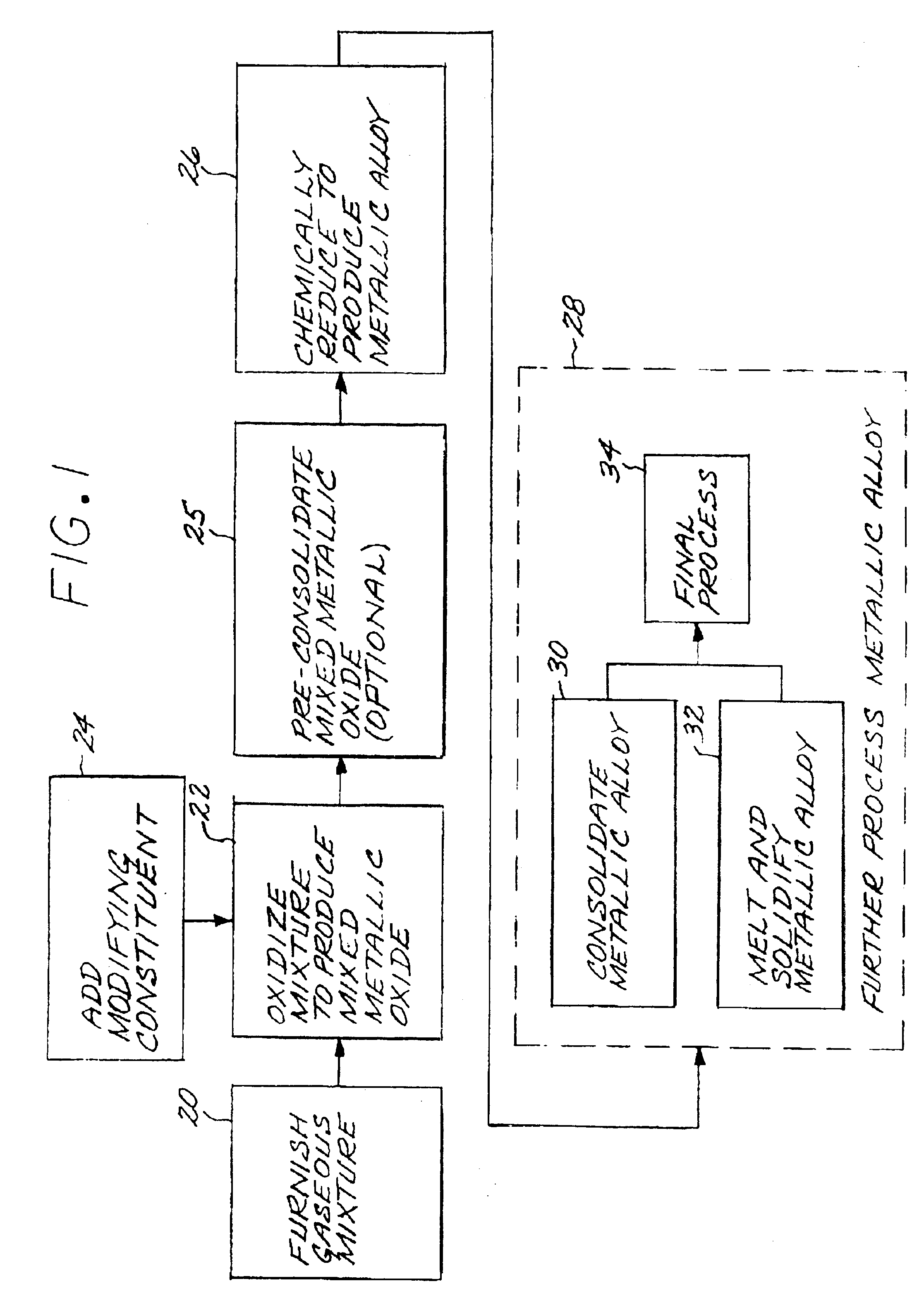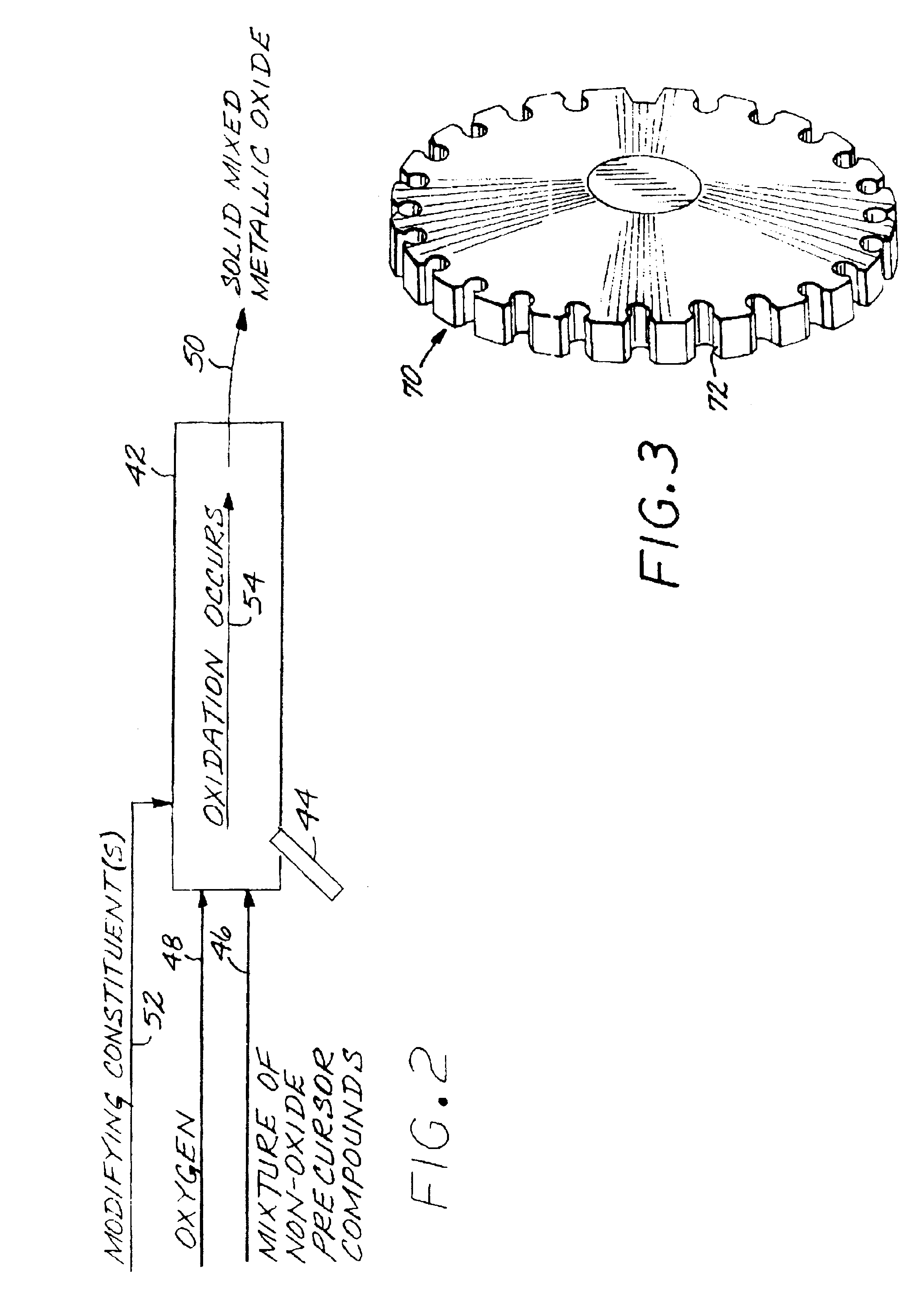Method for producing a metallic alloy by the oxidation and chemical reduction of gaseous non-oxide precursor compounds
a gaseous non-oxide and precursor compound technology, applied in the direction of coatings, etc., can solve the problems of difficult or impossible manufacturing of the most-desirable forms of many types of alloys, and achieve the effect of expanding the defect structur
- Summary
- Abstract
- Description
- Claims
- Application Information
AI Technical Summary
Benefits of technology
Problems solved by technology
Method used
Image
Examples
Embodiment Construction
[0018]The present approach, as illustrated in FIG. 1, is embodied in a method for producing a metallic material having at least two metallic constituents, commonly termed a “metallic alloy”. As used herein, the term “metallic alloy” includes both conventional metallic alloys and intermetallic compounds formed of metallic constituents, such as approximately equiatomic TiAl. Relatively small amounts of nonmetallic elements, such as boron, carbon, and silicon, may also be present. The approach includes furnishing a, gaseous mixture of at least two non-oxide precursor compounds, step 20. The non-oxide precursor compounds are preferably inorganic salts of the metallic elements (termed “metal salts”), more preferably inorganic halides of the metallic elements (termed “metal halides”), and most preferably, in the case of the preparation of titanium alloys, inorganic chlorides of the metallic elements (termed “metal chlorides”). (As used herein, sulfates, nitrates, and carbonates are consid...
PUM
| Property | Measurement | Unit |
|---|---|---|
| metallic | aaaaa | aaaaa |
| temperature | aaaaa | aaaaa |
| melting temperature | aaaaa | aaaaa |
Abstract
Description
Claims
Application Information
 Login to View More
Login to View More - R&D
- Intellectual Property
- Life Sciences
- Materials
- Tech Scout
- Unparalleled Data Quality
- Higher Quality Content
- 60% Fewer Hallucinations
Browse by: Latest US Patents, China's latest patents, Technical Efficacy Thesaurus, Application Domain, Technology Topic, Popular Technical Reports.
© 2025 PatSnap. All rights reserved.Legal|Privacy policy|Modern Slavery Act Transparency Statement|Sitemap|About US| Contact US: help@patsnap.com


